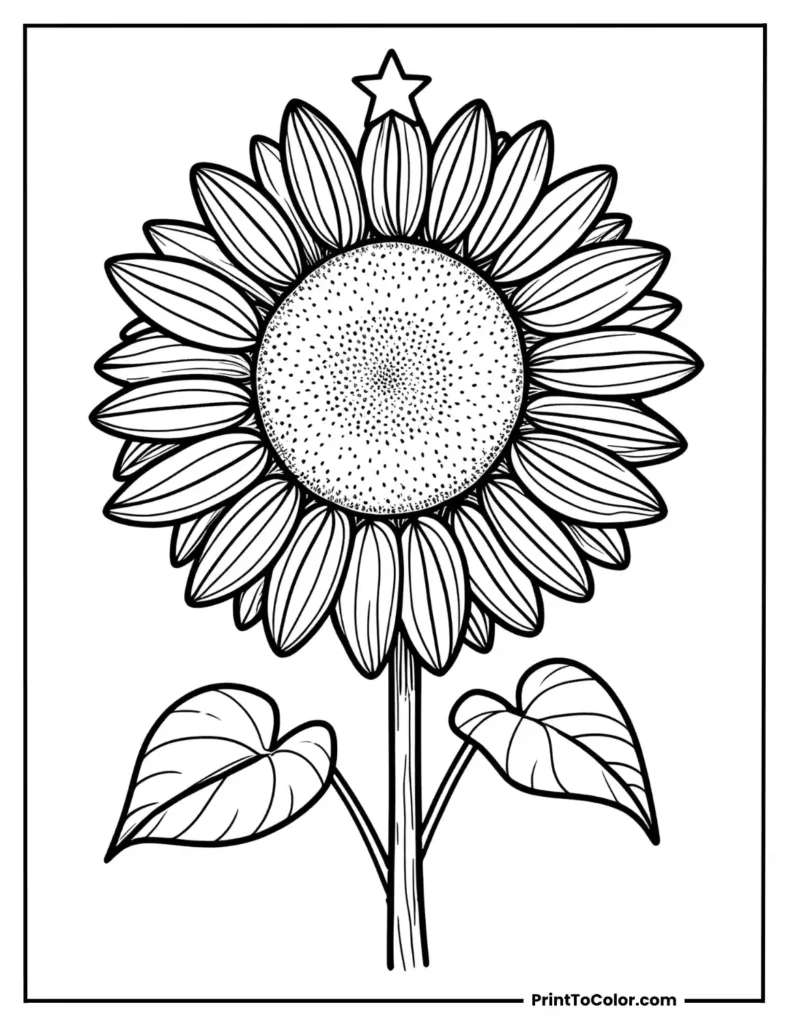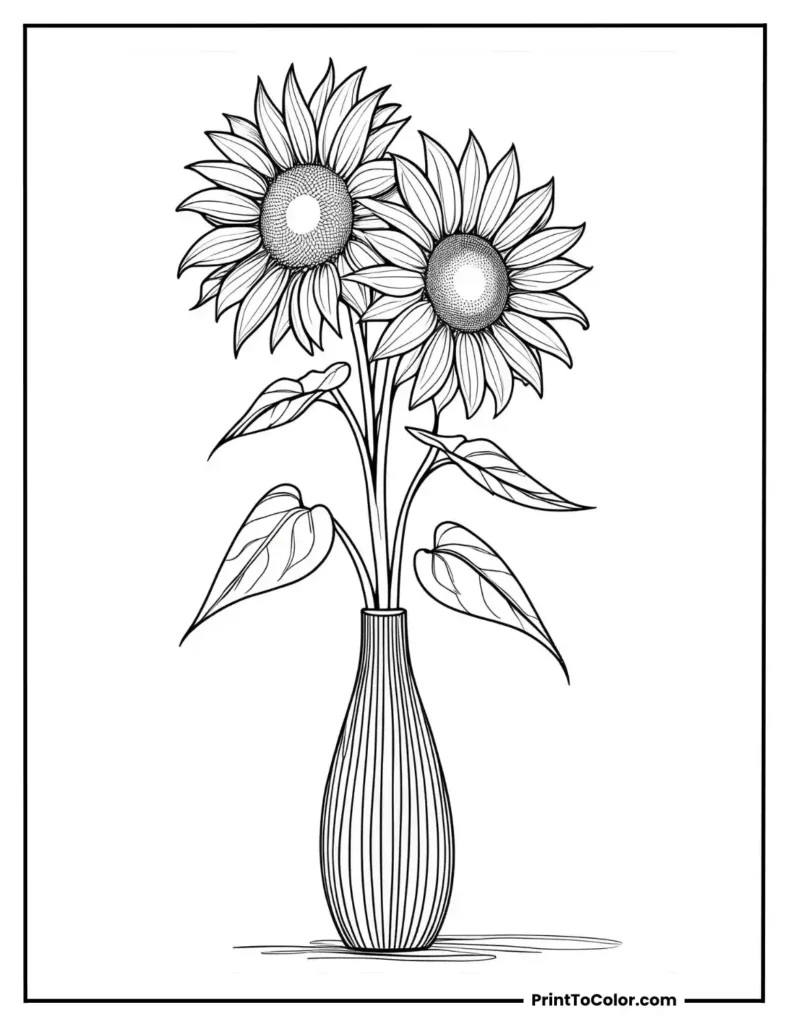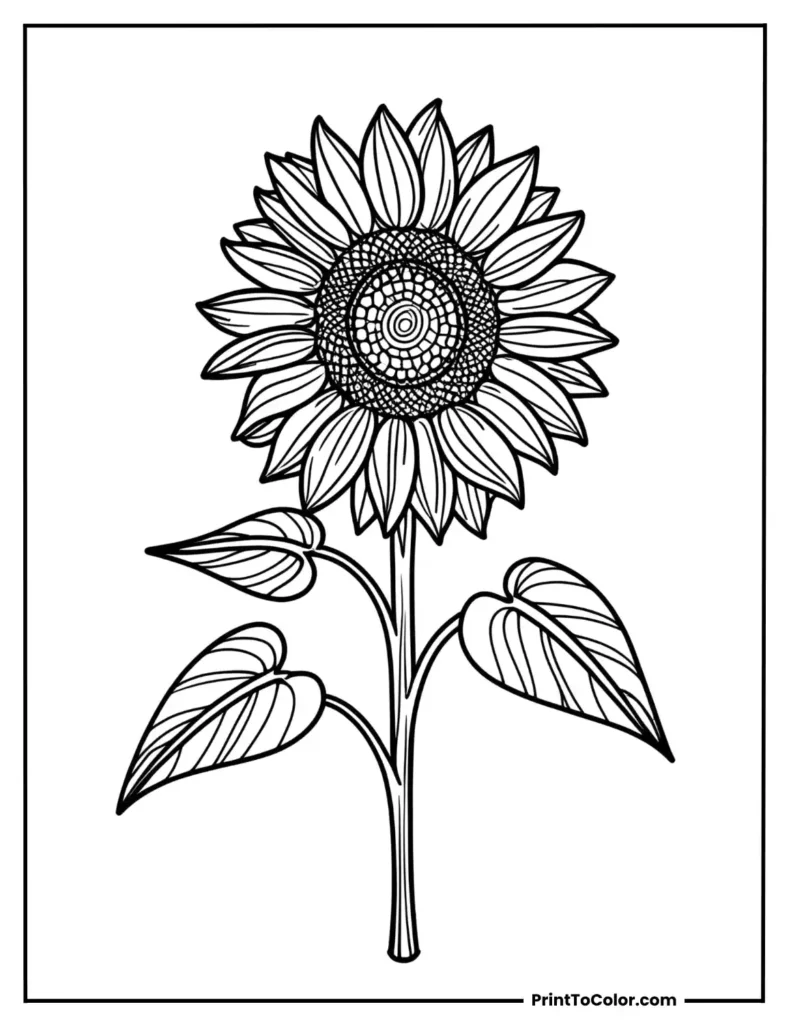Sunflower Coloring Pages
Coloring is more than just a fun pastime. It helps children develop focus, fine motor skills, and creativity, while giving adults a calming, screen‑free activity. Among the many themes available, sunflower coloring pages stand out for their cheerful designs, educational value, and universal appeal.
On this page, you’ll find everything you need to know about sunflower: their benefits, creative uses, educational tie‑ins, and high‑quality free printables.

A big sunflower with two leaves on each side

A happy sunflower with large, round petals

Two sunflowers in a thin vase

Sunflower with geometric petal shapes

Sunflower stem with one open bloom and two buds

Sunflower with large petals

A simple Sunflower

A happy sunflower with simple swirl patterns on its petals

Tall sunflower in a thin vase

Sunflower in a mandala-style circular layout
You might also like to explore these related coloring pages
Why Sunflowers Make Perfect Coloring Pages
Sunflowers are instantly recognizable with their tall stems, broad leaves, and bright yellow petals. They symbolize warmth, positivity, and growth. Coloring them is not only enjoyable but also educational.
Here is why sunflowers are ideal for coloring activities:
According to the U.S. Department of Agriculture, sunflowers are one of the most widely grown oilseed crops in the world, with millions of acres planted annually (USDA, 2023, https://www.nass.usda.gov). This real‑world connection makes them a natural fit for classroom activities.
Types of Sunflower Coloring Pages
When building a sunflower coloring collection, variety matters. Here are the most popular types:
Simple Outlines for Kids
- Large petals and bold outlines.
- Perfect for preschoolers and early learners.
- Helps with hand‑eye coordination.
Detailed Sunflower Templates
- Intricate petal patterns and textured centers.
- Great for older kids and adults who enjoy mindful coloring.
Sunflower Mandalas
- Circular, symmetrical designs with sunflower motifs.
- Popular for stress relief and mindfulness.
Seasonal Sunflower Pages
- Sunflowers with pumpkins for autumn.
- Sunflowers with butterflies for spring.
- Sunflowers in vases for year‑round creativity.
Educational Sunflower Sheets
- Label the parts of a sunflower (stem, leaves, petals, seeds).
- Life cycle diagrams for classroom use.
Educational Benefits of Sunflower Coloring Pages
Coloring sunflowers is more than fun — it supports learning and development.
The American Occupational Therapy Association notes that coloring activities help children improve dexterity and visual‑motor integration (AOTA, 2022).
Fun Sunflower Facts for Kids
Sunflowers are more than just pretty flowers — they are fascinating plants with lots to teach. Here are some kid‑friendly facts you can share alongside coloring activities:
Sunflowers Through the Seasons
Sunflowers are strongly tied to the seasons, which makes them perfect for themed coloring pages and crafts:
Sunflowers in Art and Culture
Sunflowers are not just plants, they are cultural icons.
Tips for Coloring Sunflowers
Creative Ways to Use These Coloring Pages
Coloring pages don’t have to stop at crayons. Sunflower designs can be turned into fun projects, learning tools, and even calming activities. Here are some ideas:
